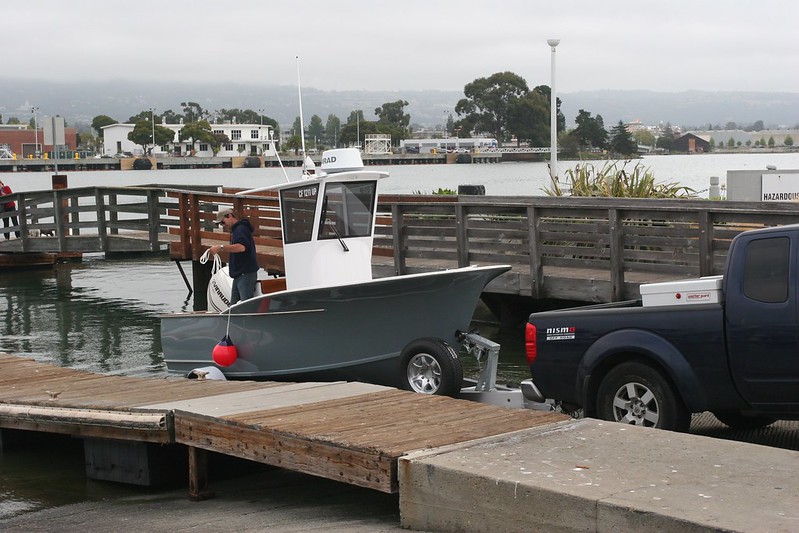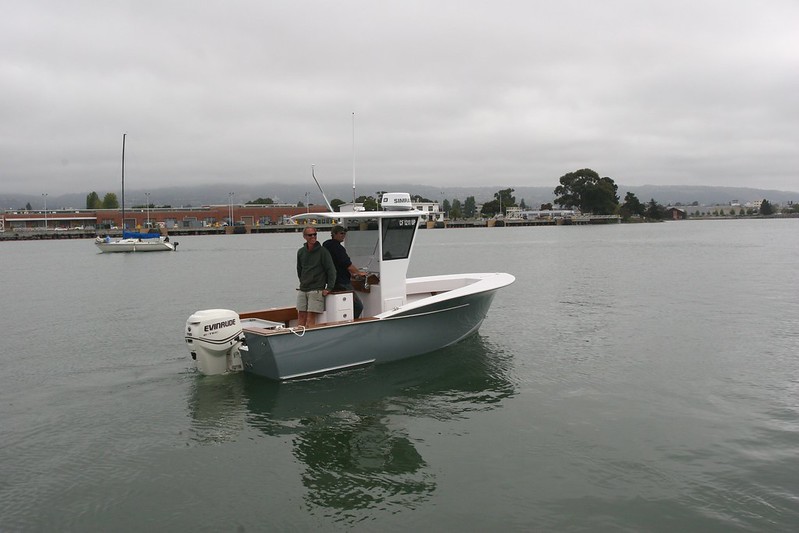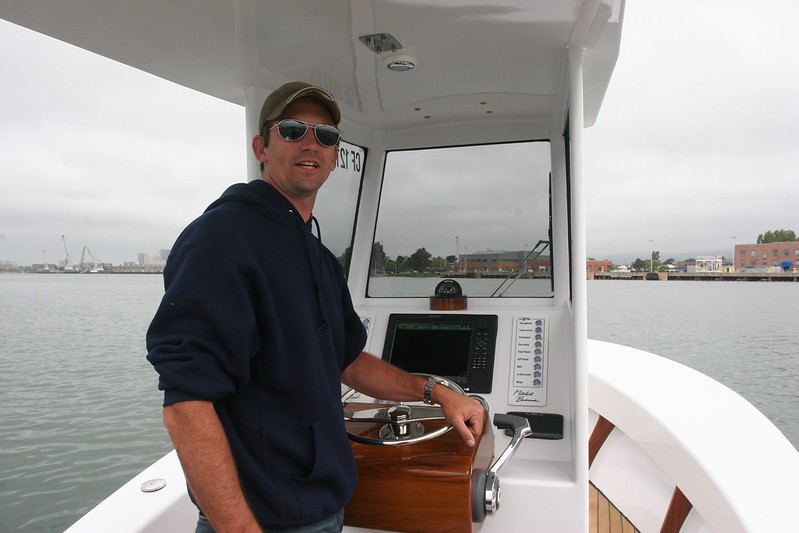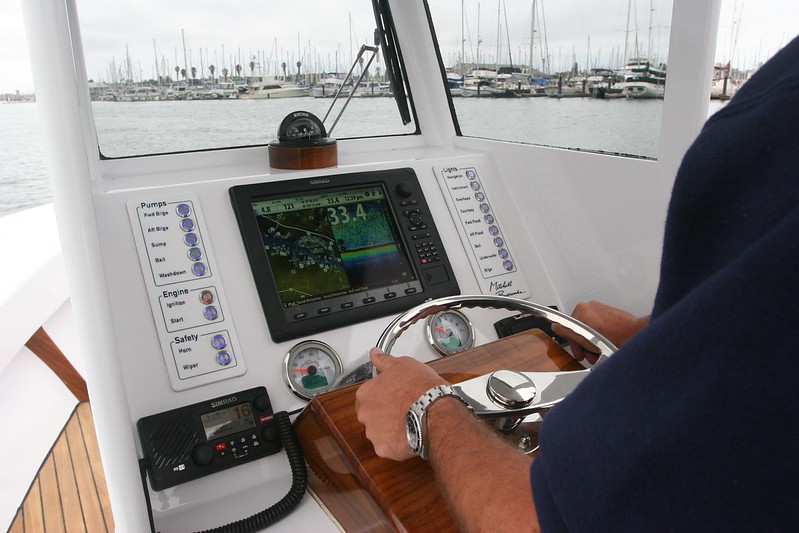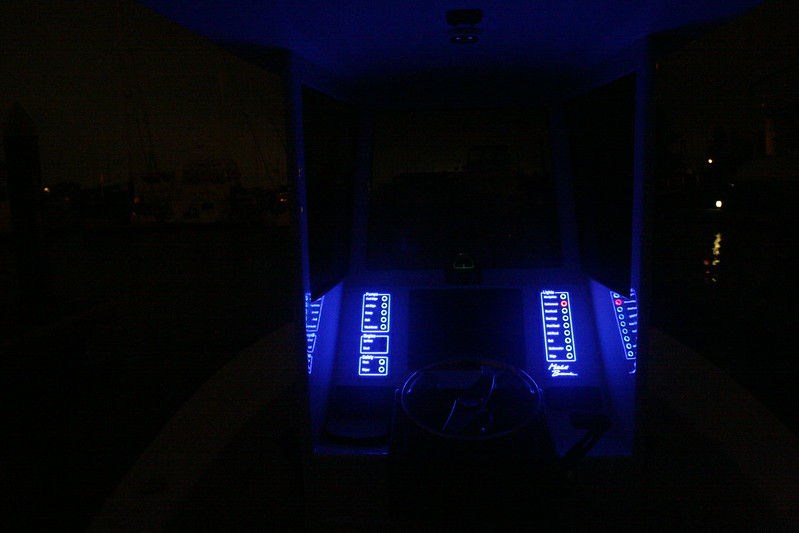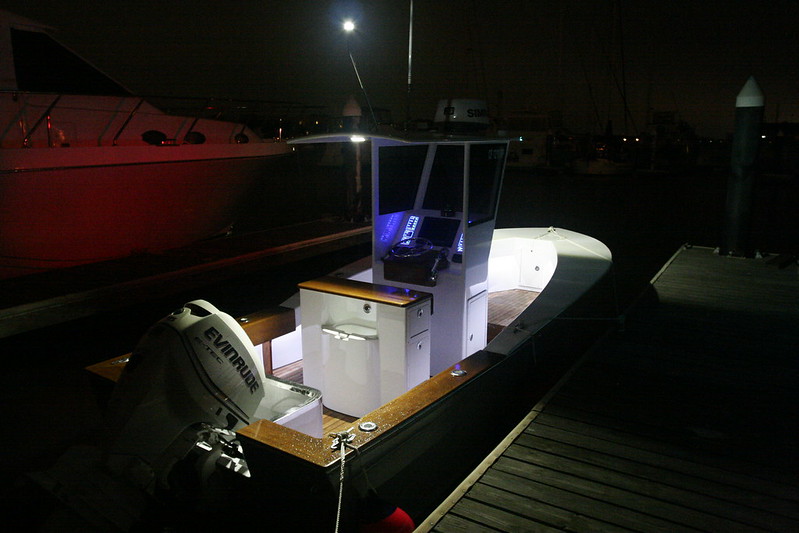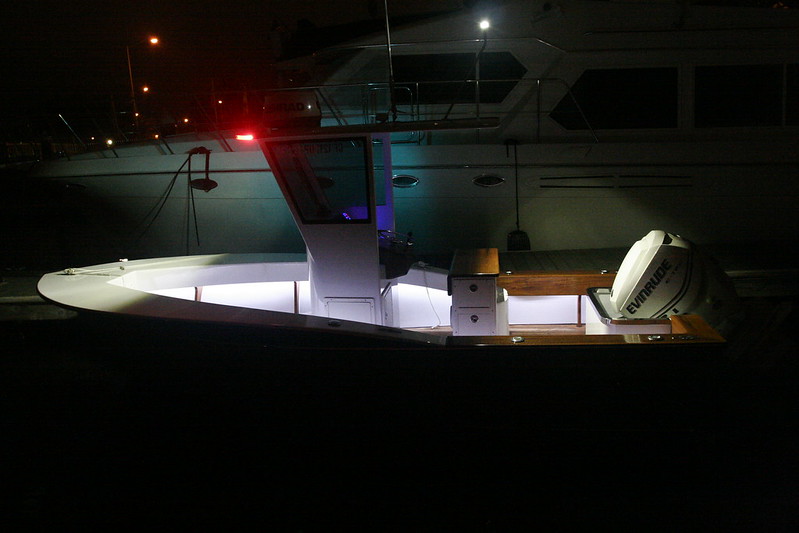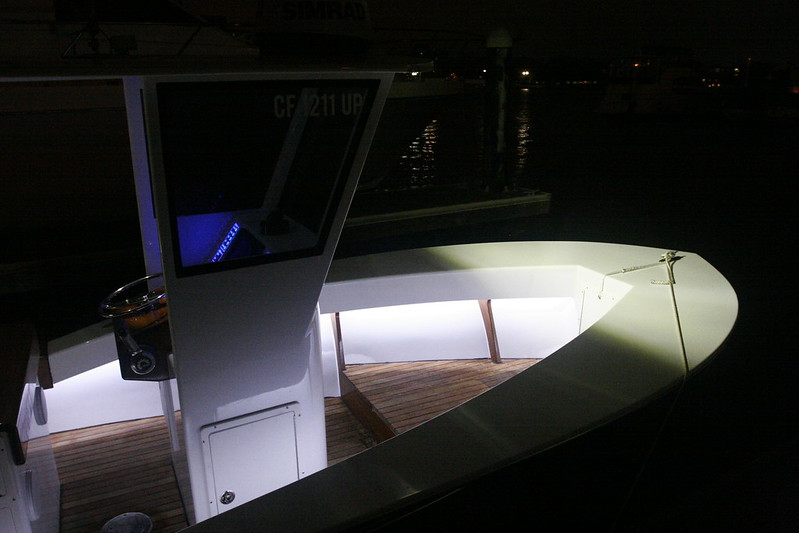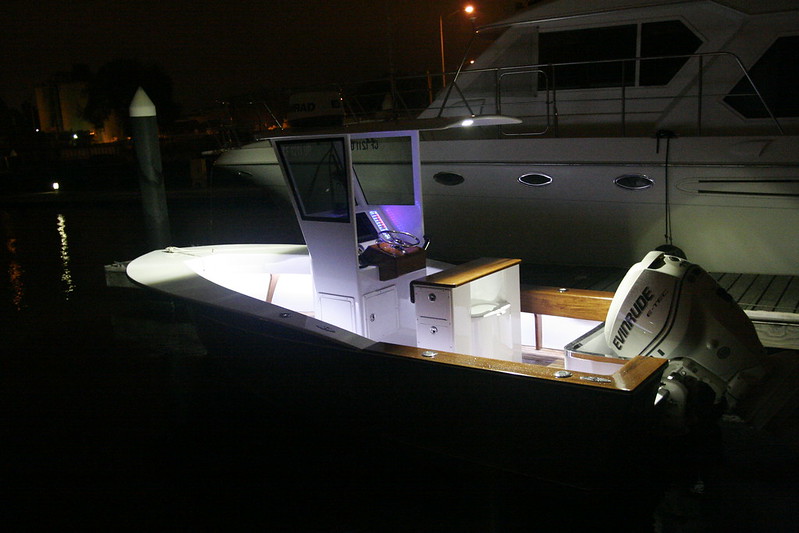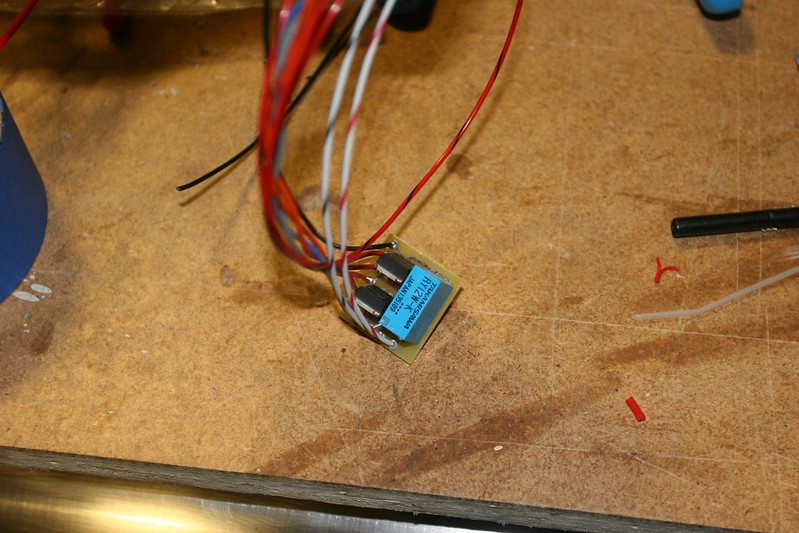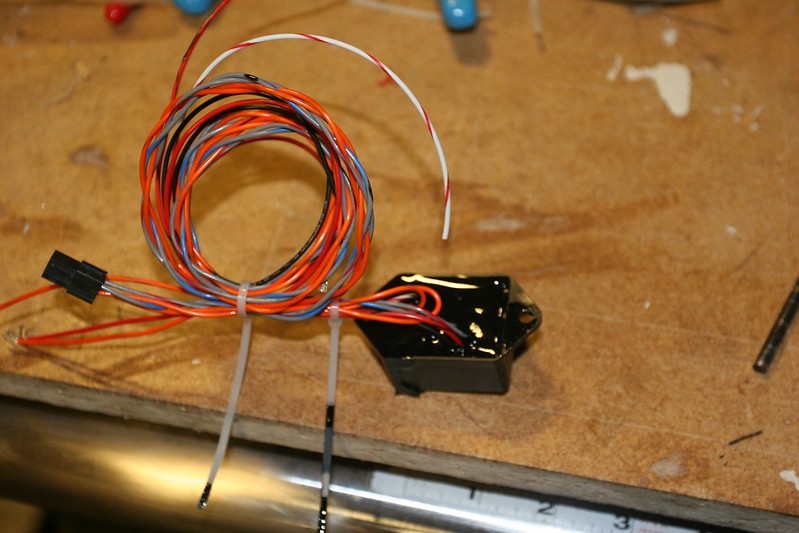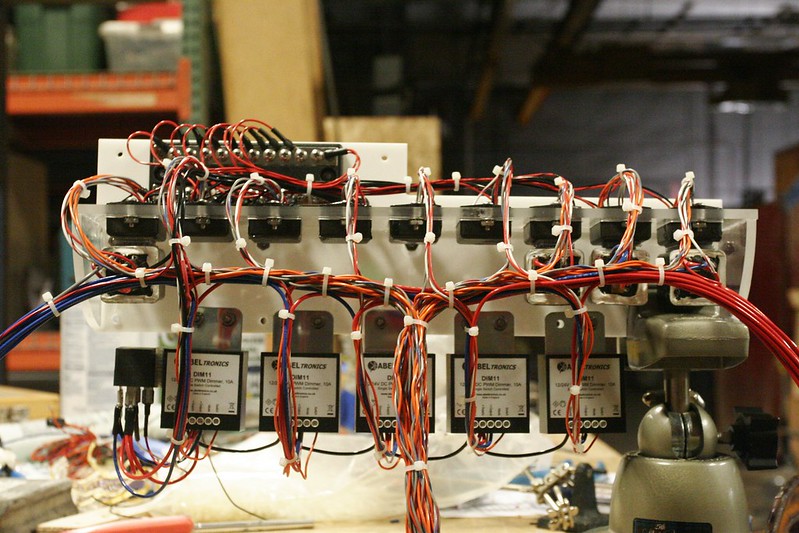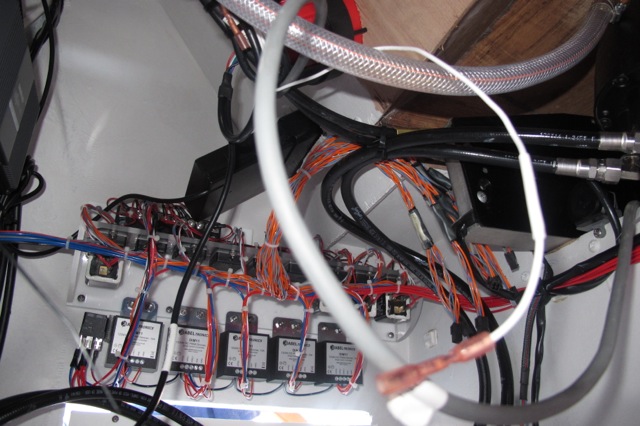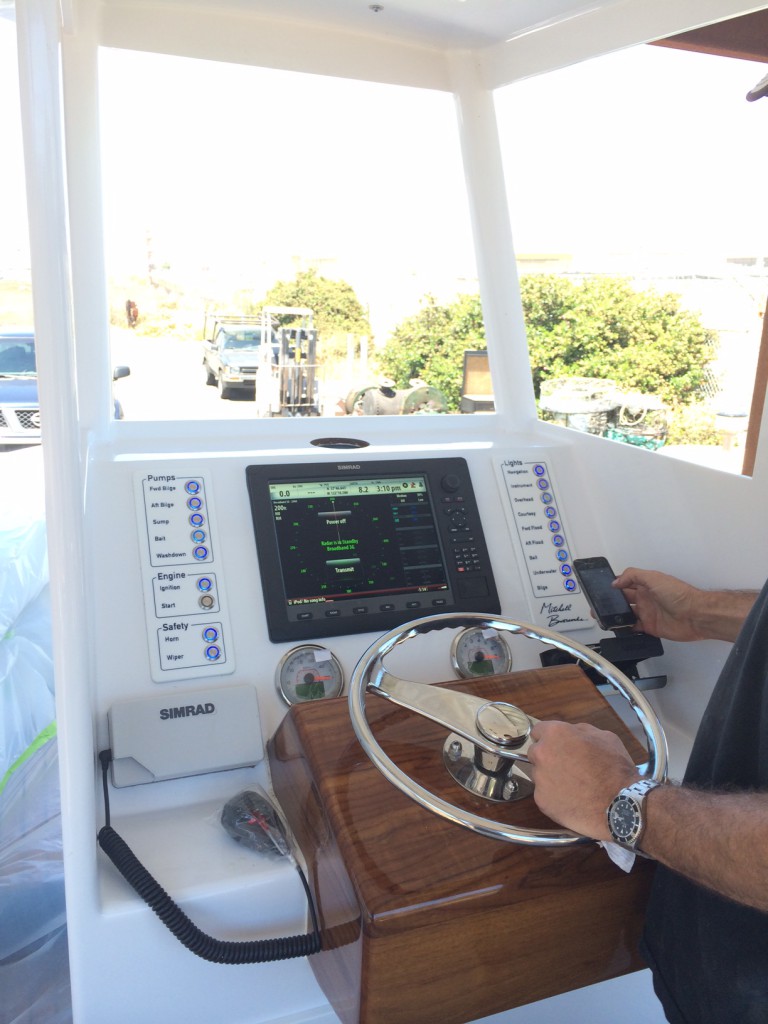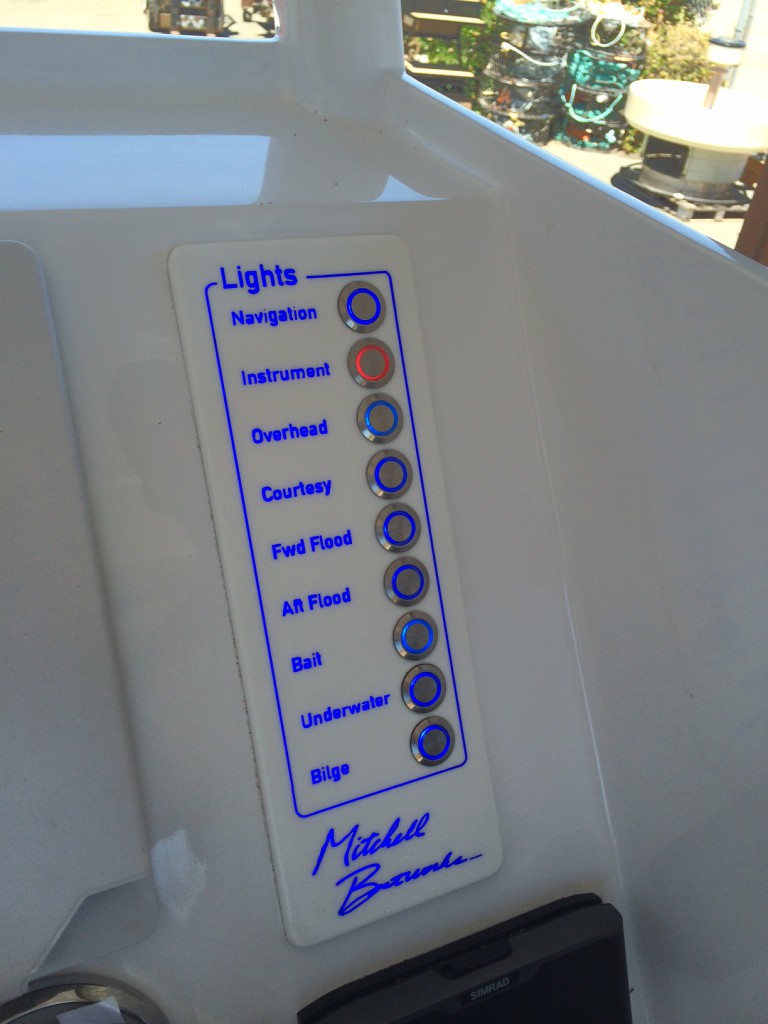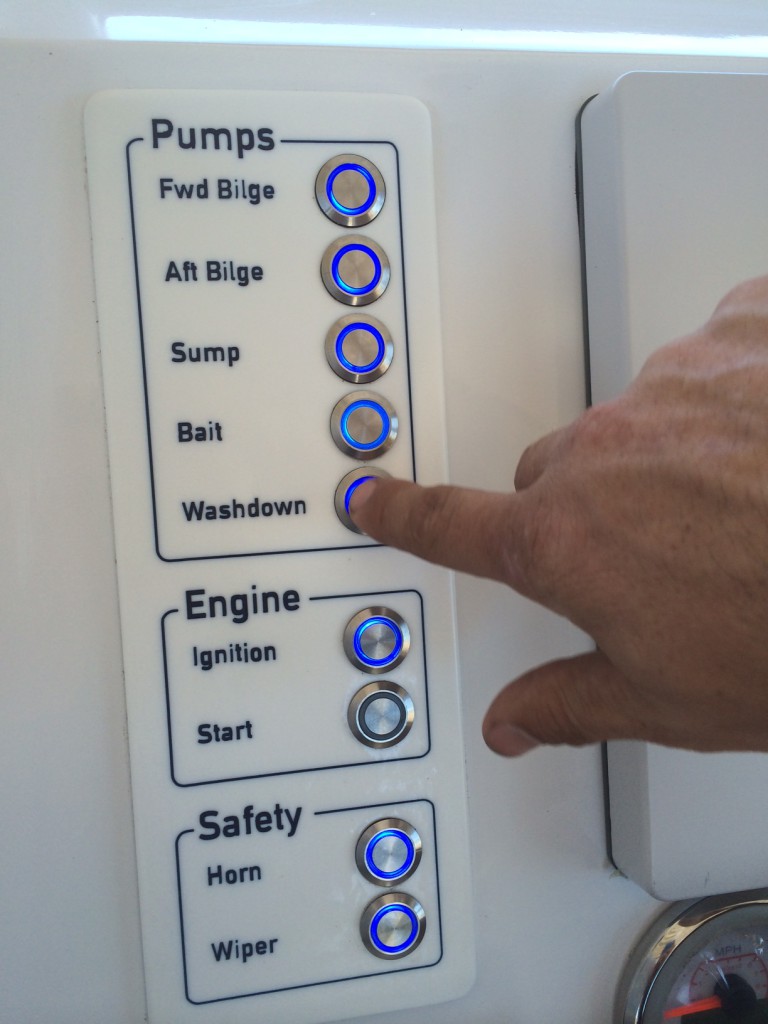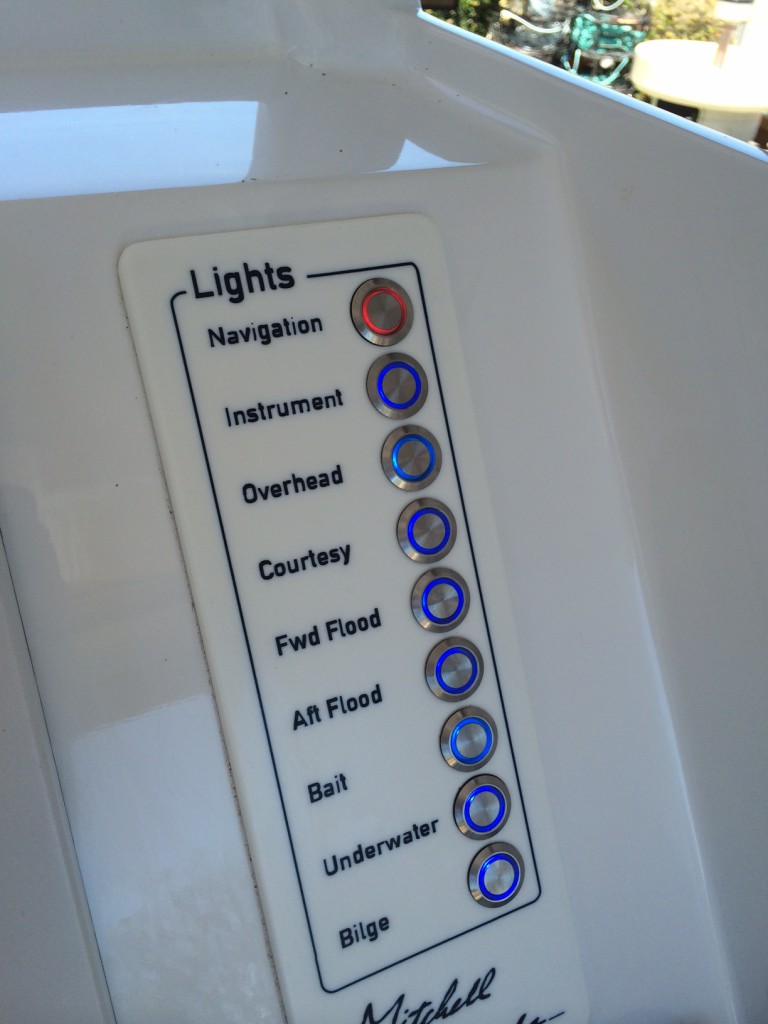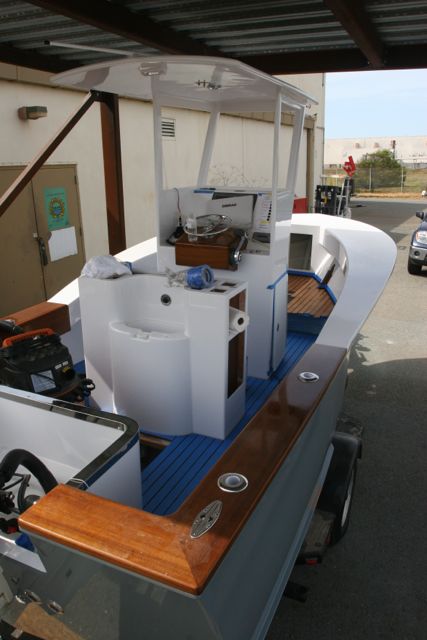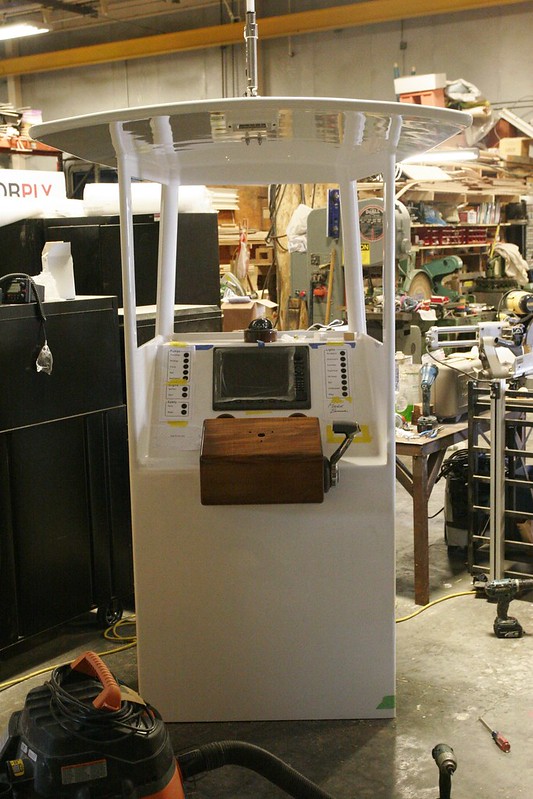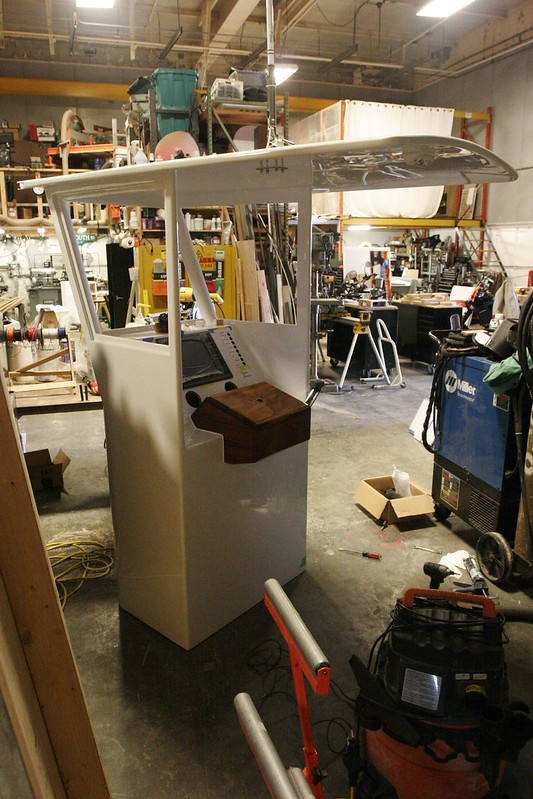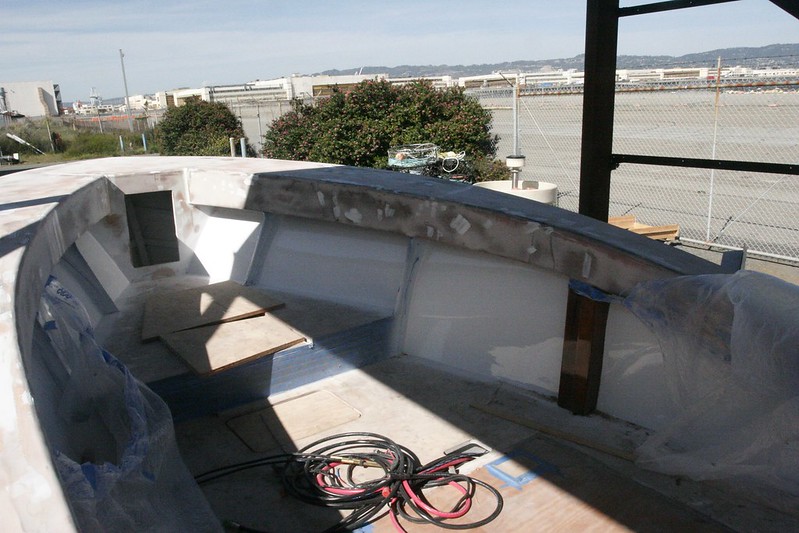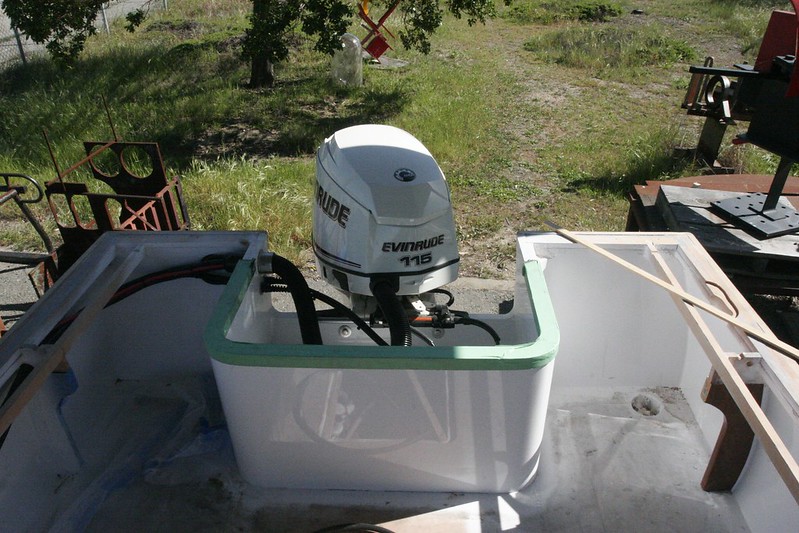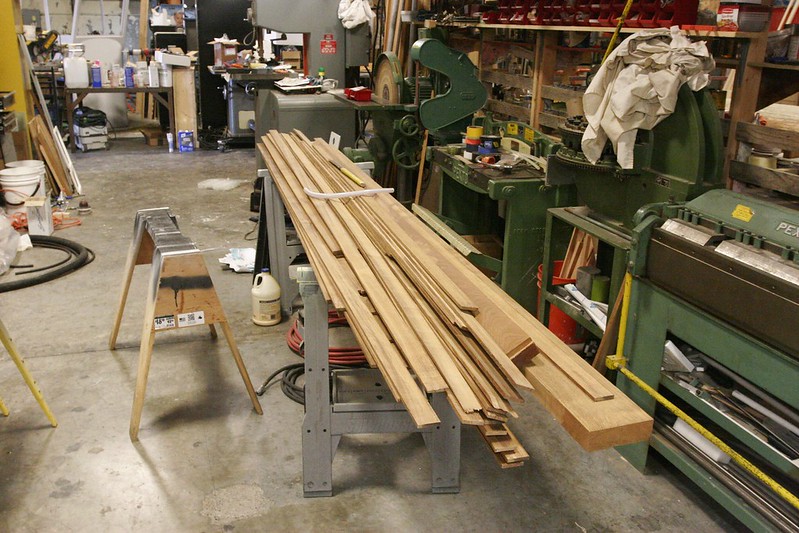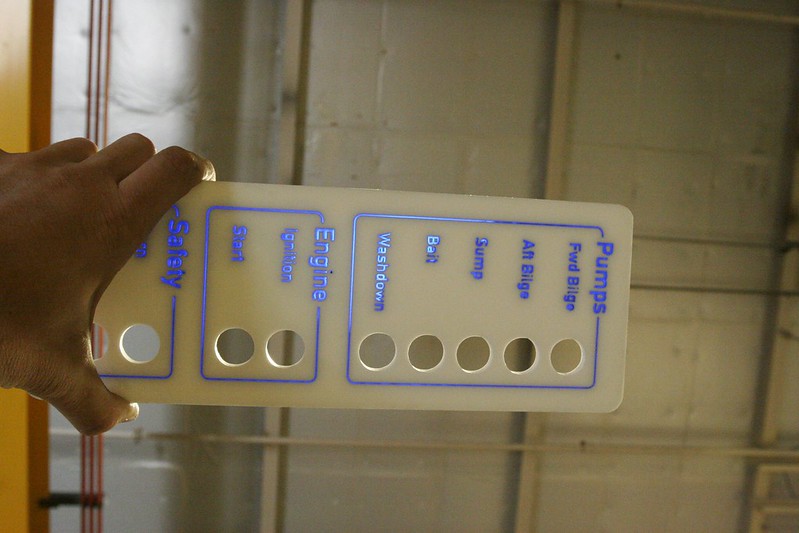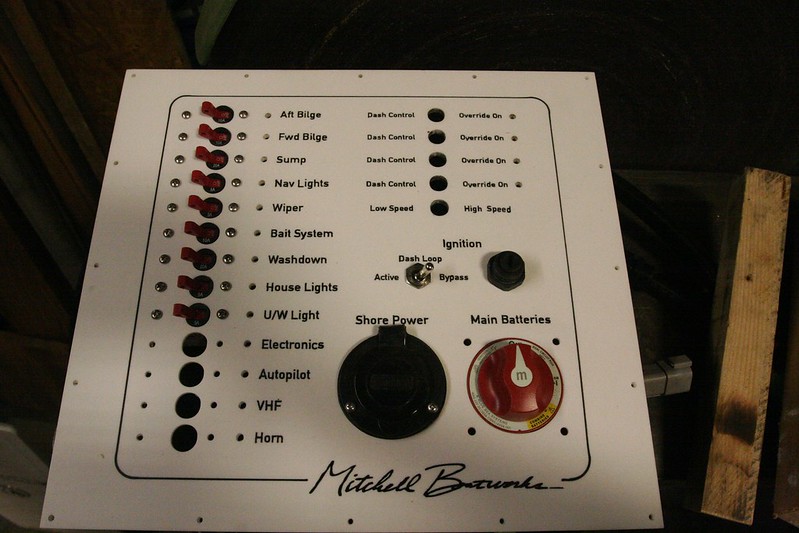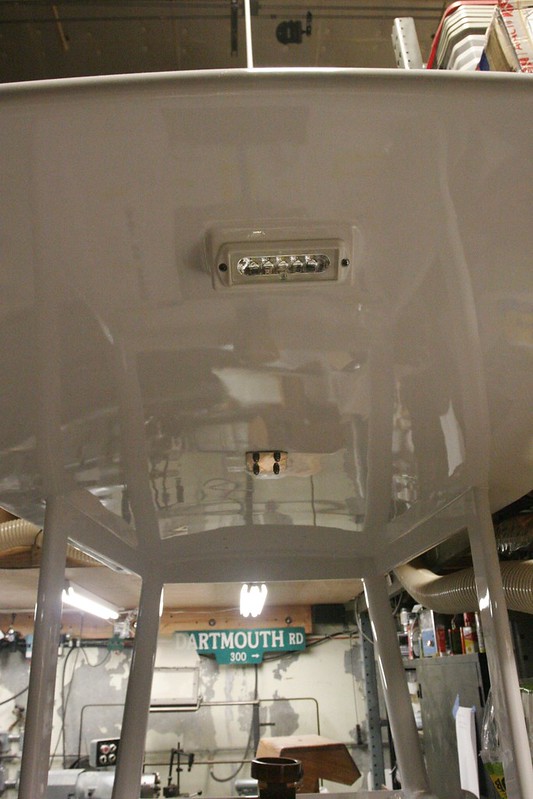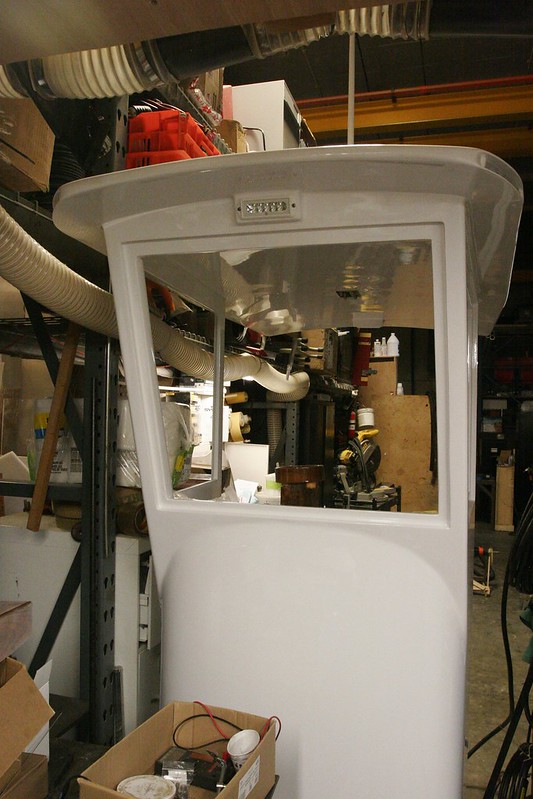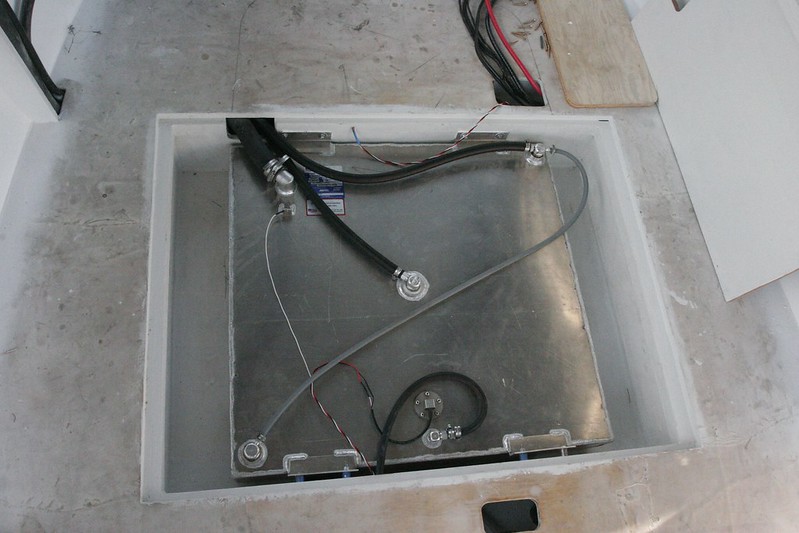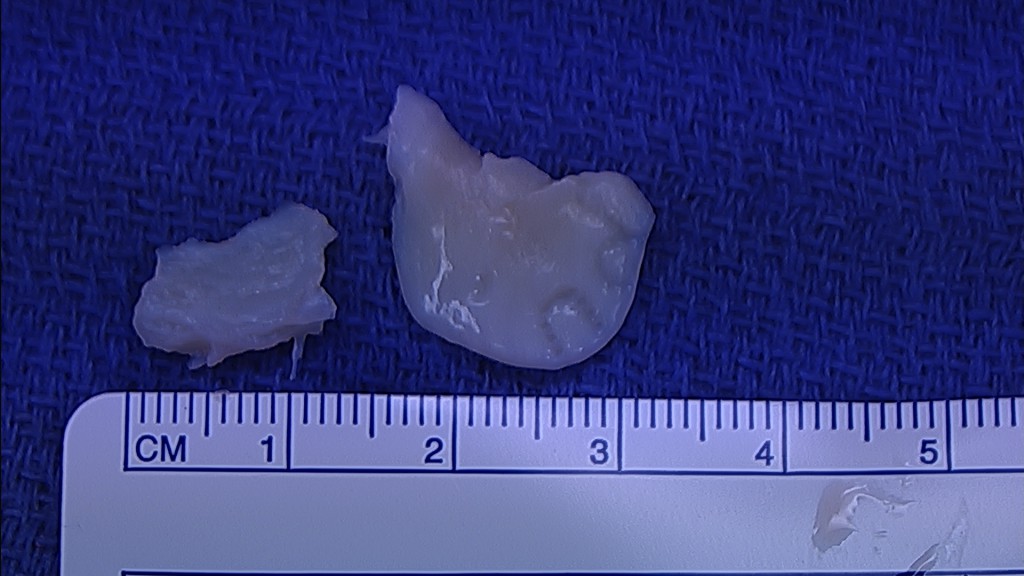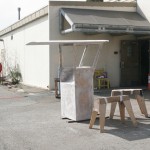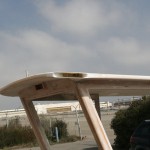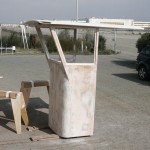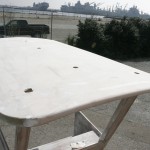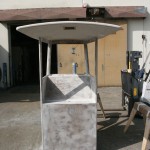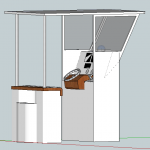As of last Saturday, there is no longer a lingering doubt that something might go horribly awry when this project turned from boat building to boat floating. Sea trials are complete and she performs quite nicely. There are still numerous details to sort through, but she’s now a boat, not a project. Photos follow.
So. Very. Close.
I’m tired of apologizing for long delays, but I find myself once again in that position. Sigh…
In any event, the lack of updates does not indicate a lack of progress! We are very nearly done with the boat.
The gunnels are faired and painted with gloss white. Still haven’t done the non-skid, but that’ll be one of the last steps.
The console and leaning post went in pretty easily. Good things come to those with forklifts.
This is what she looks like with those items sitting in place. When this photo was taken the seat board wasn’t attached yet and the furniture wasn’t bolted down, but it’s a good visual.
After that, we (okay, this is more of an “I”… my dad’s not much on electrical) moved on to the wiring. I believe I’ve mentioned before that I designed some custom circuit boards to control the awesome little buttons I found. Here’s one of them all soldered up.
There are actually two designs – one for the thirteen circuits that have a simple on/off and one for the five circuits that have dimmers. But the basics are the same.
Each one of the boards gets potted in resin to seal it and protect from environmental exposure. You can also see the four-contact mini-connector that connects the button to the box. The other leads are all done with standard quick disconnects that will be added later.
Each one of the switch panels has 9 buttons on it, and so I CNC’d two mounting frames to hold the supporting control-box / relay / dimmer assemblies.
This one supports the panel for lighting. You can see the row of control boxes at the top. The leftmost box and the three at the right end each have a DNI0127 relay attached beneath them with industrial velcro. These are “on-off” circuits. The other five have no relays, but instead connect to the five ABELtronics DIM11 relays you can see at the bottom of the frame. These dimmers turn the circuit on or off with a momentary button press, and if you hold the button down it cycles through the range of dimming. For things like the deck flood lights I wanted to be able to dim them down because in the early morning you might want a little light, but not to be overwhelmed. The observant viewer will note that the leftmost dimmer has a relay attached to it as well. That’s the “Instrument” dimmer. When it’s “on” it turns on (and dims) the backlights for the switch panels, plus the compass. It also dims the LED rings on the buttons so everything looks consistent. When it’s “off” the compass and switchplate lights go off, but we still need to illuminate the buttons, so that SPDT relay switches the buttons back and forth between the dimmed output and a 12V+ source so there’s always current to the button LEDs regardless of the state of the Instrument lights switch.
Here’s a shot of the pigtails for connecting the control harness to the buttons. Each pigtail is appropriately labeled since it’d be impossible to figure out which was which once they were all zip-tied into a harness. There were 144 miniature pins that had to be crimped to 20ga wire to for these. Ugh.
The complete assemblies (which thankfully could be built from the comfort of a nice workshop bench) were mounted in the console as single units. The (hundreds) of wires that then needed to be connected to integrate them to the boat were all fit and cut to the correct length, crimped, soldered and heat shrunk in the (very, very confined space of the) console.
At about this same point in the process the electronics suite, the battery charger, and a bunch of other stuff went into the console. The lights and other bits all got mounted as well:
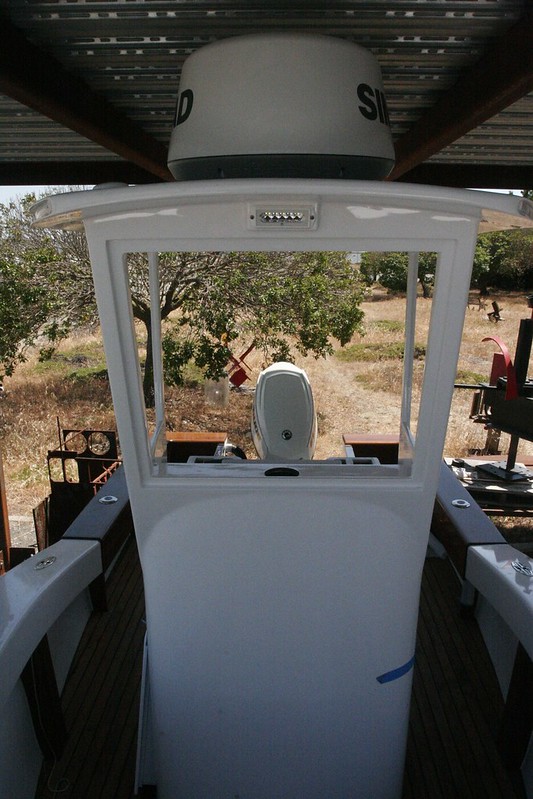
There’s a lot of wire in this boat. On the topic of wire, I used really nice wire. It’s Milspec aviation wire with Tefzel insulation. The insulation is more abrasion resistant and thinner than standard marine wire. And rather a lot more expensive. Sigh…
Once it’s all together, the dash is very nice and clean, belying the complexity beneath:
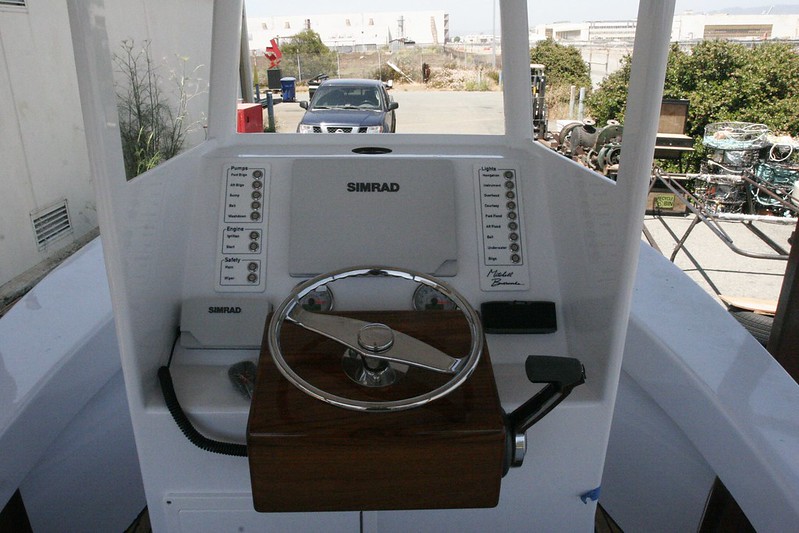
And it looks pretty cool when the panel backlights are on:
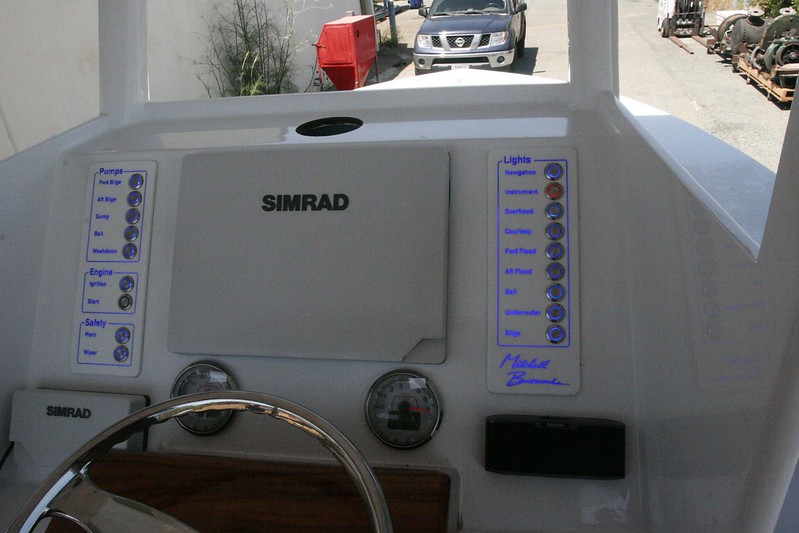
The hatch covers were teaked on top, and then I cut grooves in the bottoms for hatch seal.
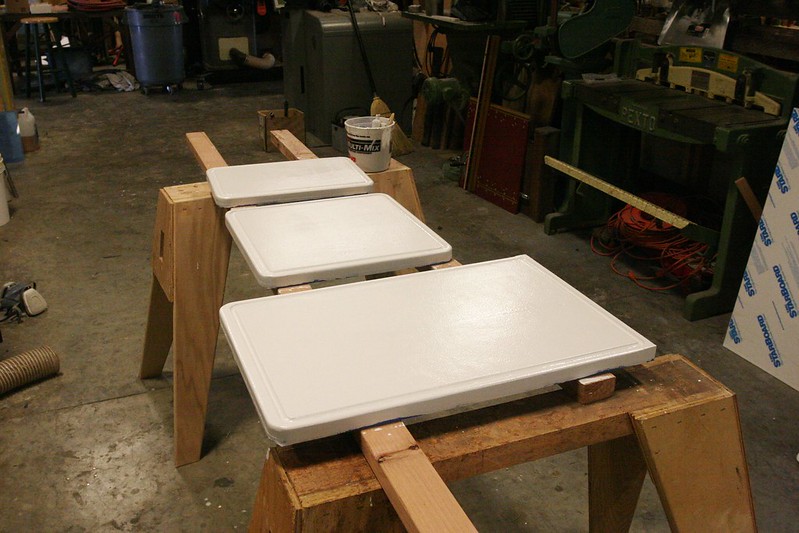
And I repaired the quarter guard from it’s run-in with the pole, and installed the stainless rub strips onto it.
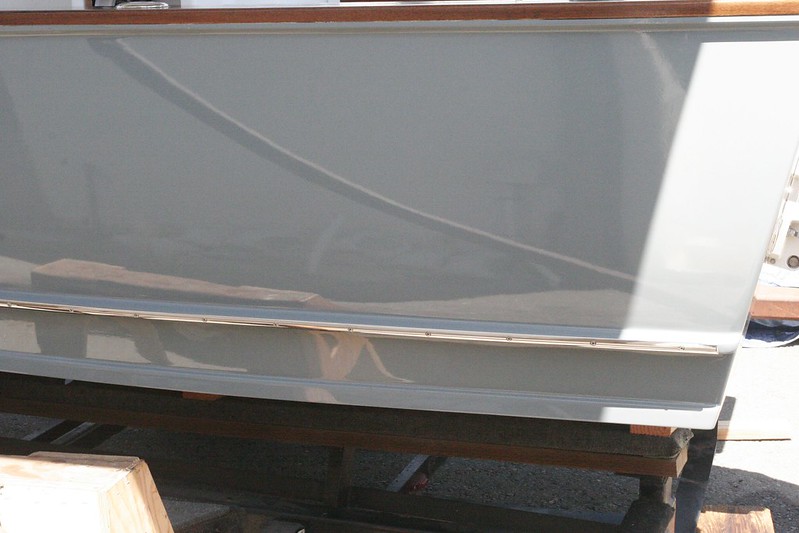
Also installed the windows, though I have no photos of that process.
At that point, we took a one-month break from progress while the boat got a fancy new aluminum trailer made at Pacific Trailers in Chino. I just got her back – photos to come – and the final sprint has started.
On Thursday she went to Outboard Motor Shop in Oakland where they fired the motor for the first time. That generally went well, but did reveal a pair of problems I need to address. The tach isn’t working and the Ignition button doesn’t shut the motor off. I’ve figured out how to fix the Ignition button issue (two more relays and a diode) but the tach I need to look into.
And then the list looks like this. I realize most of these items are cryptic and poorly explained but the point of the list is more to show how SHORT it is. We’re talking days here, people. Seriously. The boat is nearly done:
Rub rail install
Clean up windows
Clean bilges
Paint hatch lips
Paint bilges
Deck sanding
Finish fabricating access door
Install battery trays
Mount access door
Futz with bow eye
Window UV Paint
Finish fabricating leaning post storage
Install leaning post storage
Hatch cover seals
Install hatch covers
Install hatch latches
Install drain grates
Caulk stainless motorwell cap
Caulk seam between coverboards and gunnels
Non-skid
CF numbers
HIN on hull
Prop selection
Plugging away
Hello, team!
Once again, it’s been too long since I provided an update. I do apologize. The knee staged a reasonably quick recovery and I’ve been hard at work on a number of boat projects. Here’s a quick recap.
The console and bait tank are painted.
The wiring for the lights and such in the console is all run, and the VHF antenna is installed.
The helm pod is finished and installed on the console.
Openings have been cut for the plotter and the gauges.
The breaker panel is fabbed. This was done by CNC engraving the legend into white acrylic, filling it with colored resin and then sanding it smooth.
The switch panels are nearly done. Each one requires about 50 hours of CNC machining, and frankly I’m only marginally happy with how they’re coming out. But at this point it is what it is.
I’ve got working prototypes of the circuit boards that will allow the neat two-color LED buttons to illuminate correctly and drive the relays for the circuits they control.
The inwales are installed and glassed. We’re now prepping the inwale/deck system for paint.
The 8/4 teak boards I bought have been ripped into decking battens.
The fuel tank is installed and plumbed, and the tank well cover is installed.
The motor is installed and rigged.
The stainless motorwell cap is done and polished.
The teak seating surface is built and has a couple of initial coats of finish on it.
Honestly I’d love to provide narrative on all this, but it would take forever. I’ll let the pictures do the talking.
Arthroscopic Meniscectomy
So… I’m sure many of you out there will be rolling your eyes about someone approaching his 40th birthday complaining that he’s “old,” but my joints ain’t what they used to be. This sanding has given me a vicious case of tennis elbow, and I actually managed to tweak my knee pretty badly in a boat-building incident. Badly enough, in fact, that I’m presently recovering from the general anesthesia required for arthroscopic meniscectomy. I’ll be off my feet for a couple of days, but for those of you who need oddball media to get you through your day, I present these alternatives to boat building content:
They took out an alarmingly large piece of my knee. It’s a bit frightening, really.
Console
The console is off to the painter. This thing was more work than expected, but I’m pretty happy with the result. Lots of inside corners = way too much annoying detail sanding. My dad and I took turns and we’re both pretty burned out on it at this point.
One of the most difficult tasks was getting the edge of the top to look sufficiently fair all the way around. At the end of the rounding / glassing process it was pretty wavy and it took several days of adding compound, shaping, sanding, and repeating before it looked right. This was especially tricky because the recesses for the nav lights created bulges in the front corners that needed to feather in nicely, and also because the top starts tapering half way through its length. It’s done though. Or at least done enough that the painter can shoot some high build on it and deal with whatever remaining details show up after that.
Here are a couple of shots. The holes in the roof are for cable routing through the interior channels, and will get covered with polished stainless plates later on. I’ve also included an old SketchUp rendering of the concept drawing.
Getting closer!
-Ben
Checking boxes
As we get toward the home stretch, the project evolves more and more to a litany of little items, as opposed to a few monolithic tasks. Here’s what we’ve been doing.
First off, we finished the carpentry on the coverboards and got four coats of AwlSpar on them. They’re now sitting, waiting for the varnish to cure enough that we can start with the AwlBrite. That’s 3 days in good weather, but it’s cold and rainy here right now which means it’s likely to be more like a week. But I took photos!
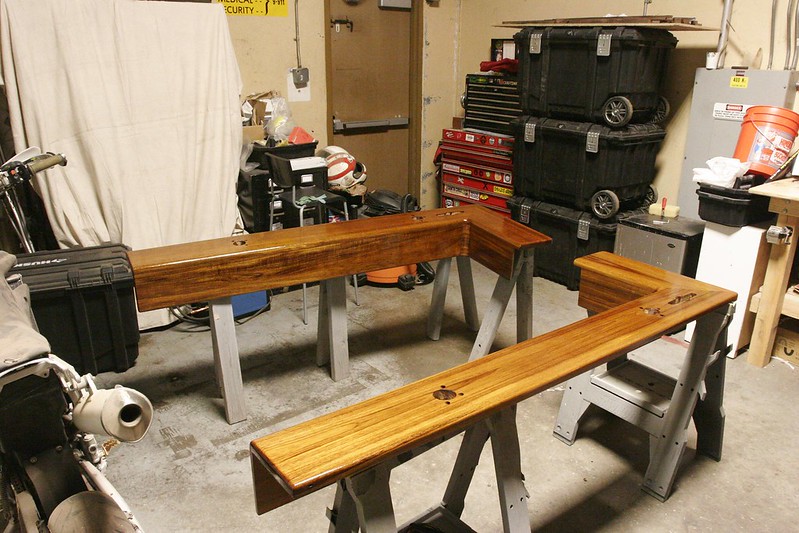
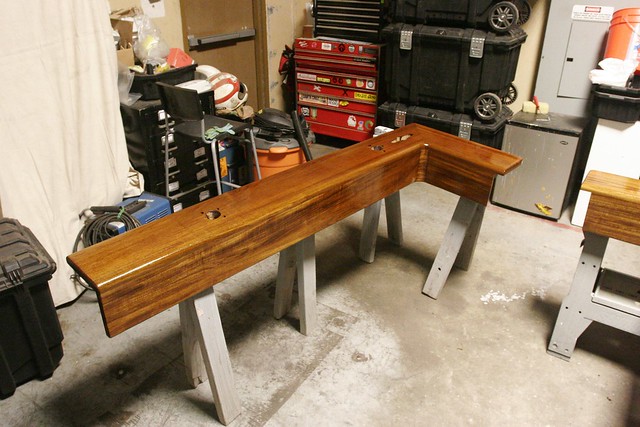
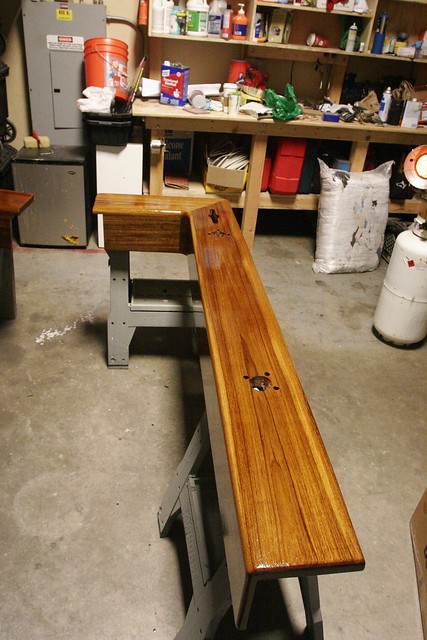
Next up, we routed channels in the hardtop and set in fiberglass tubes for cable runs, and wood blocks for hard points. This is all cured now and we’ll be putting the top sheet of glass on tomorrow. The heavy things are holding the tubing down – especially important in the curves.

And finally, we’ve been working on fairing the console. Nothing worth looking at photo-wise there, but it’s a giant sanding PITA.
Also in the “sanding and fairing” bucket is that I’ve been cleaning up the sheer line to get it ready for primer, as well as fairing the forward gunnel/deck. Much of this area will be painted non-skid so it won’t show minor fairing imperfections as much as the glossy bits, but it still needs to be tended to. The sheer line is now pretty much done with the exception of a few small pinholes to fill before a first coat of primer. The gunnel still needs work.
I’ve decided to cap the motorwell in polished stainless not teak, so I sent a cut file off to the waterjet place to make the U-shaped part. While I was at it, I figured I’d have some other parts made including some caps for cable outlets on the hard top, a backing plate for the VHF antenna, and – because I’m ridiculous – come custom drain grates for the scuppers. I’ll show those off at some point down the road, but I’m happy I did it.Next on the docket: Lots of fairing on the console / roof / gunnel / motorwell, and then some primer and paint around the fuel filler. Then I can install the fuel system before the inwales go in, which will be simpler.
Lots to do, but at least there’s variety and fun in it!
-Ben


